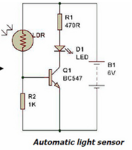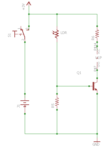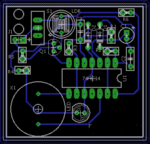ADGAN
Full Member level 5
Hi! I made an alarm circuit that is control by a light sensor. This light sensor is made out of a LDR, Transistor(2N3904) and a couple of resistors as shown below. When I constructed the circuit on a breadboard it worked fine. But when I build it on the PCB it doesn't clearly recognize darkness. i.e. when in darkness still the alarm circuit is on when it should be off. What could be the reason for this? I tried changing the resistor to 330R but still the same. Could this be because of a faulty LDR?



